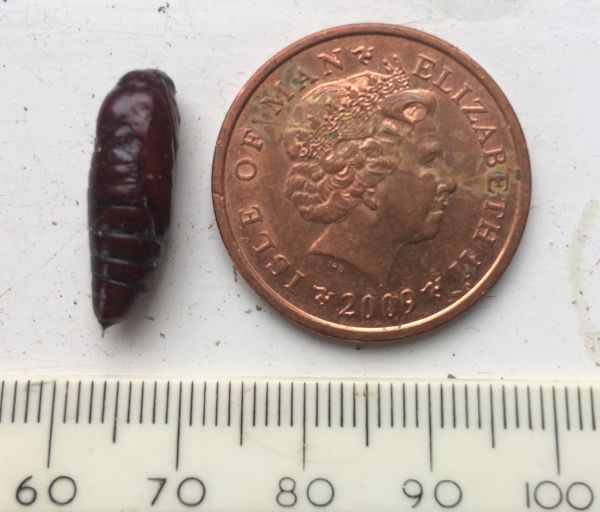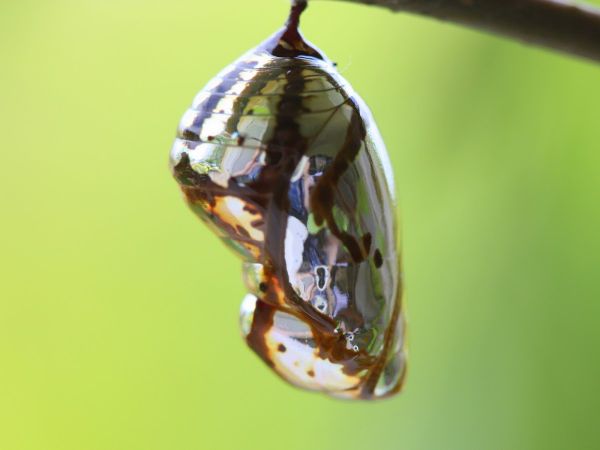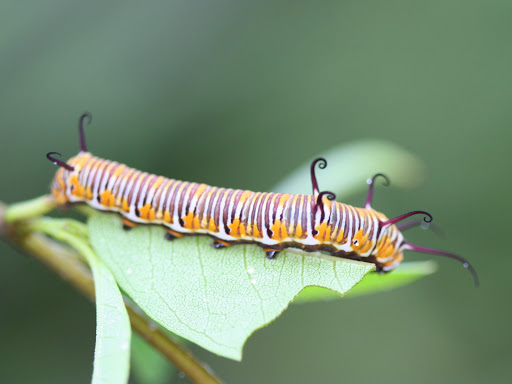In our latest #CloserToNature blog, Dr Peter Duncan, our Senior Marine Environment Officer, writes about a lockdown discovery at his old Manx cottage and invites us to follow its progress...
So it’s deepest, darkest midwinter, and we’re in lockdown again. But it’s not the springtime one of last year; the days are short, the nights long and cold, and even the garden has little attraction for daily exercise. Grumble grumble.
But take heart; the days will get longer, the seasons will change and our gardens will return to green and pleasant places again. To make the point I came across this today in my not-so-sunny sunroom (while looking for a woolly hat to go outside).

Pupa, with 1p for scale
Living in an old Manx cottage my first thoughts were: ’Oh no, which insect is eating my structural beams now?' My second thought, having lived in Australia for a while, was: ;That’s pretty big for a cockroach egg case.'
So, after a bit of checking it’s actually most likely to be a moth pupa. That’s the stage after it’s hatched from its egg, wandered round as a caterpillar - eating like a horse to store up energy, and then ‘pupating’ to go through the incredible process of metamorphosis, whereby moths and butterflies completely reorganise themselves from the caterpillar phase to the flying-around phase.
The pupal metamorphosis takes around two or three weeks, dependant on temperature, and so I thought I would try to document this process and update you on progress over the next few days and weeks.
I suppose I can’t promise that it will survive and emerge, but I’ll do my very best to keep it safe.
Meanwhile, I’m happy to take guesses as to what specifically will emerge (by the way, I’m pretty sure it won’t be a dragon or a phoenix, so sorry kids).
One possibility is the curiously named ‘angle shades moth’ (Phlogophora meticulosa).
But you’ll have to keep tuning in to find out…
Meanwhile, to hark back to my Australian days, and my very limited experience of pupating Lepidoptera (butterflies and moths) and to give you a glimpse of warmer, greener, times (not to mention a truly beautiful creature), here is the common crow butterfly; caterpillar, pupa and adult.


_001.jpg)
Photos: Common Crow pupa and caterpillar by MartinL: Project Noah, and Common Crow or Oleander Butterfly (Euploea core) Bruce Hulbert at the Australian Museum


